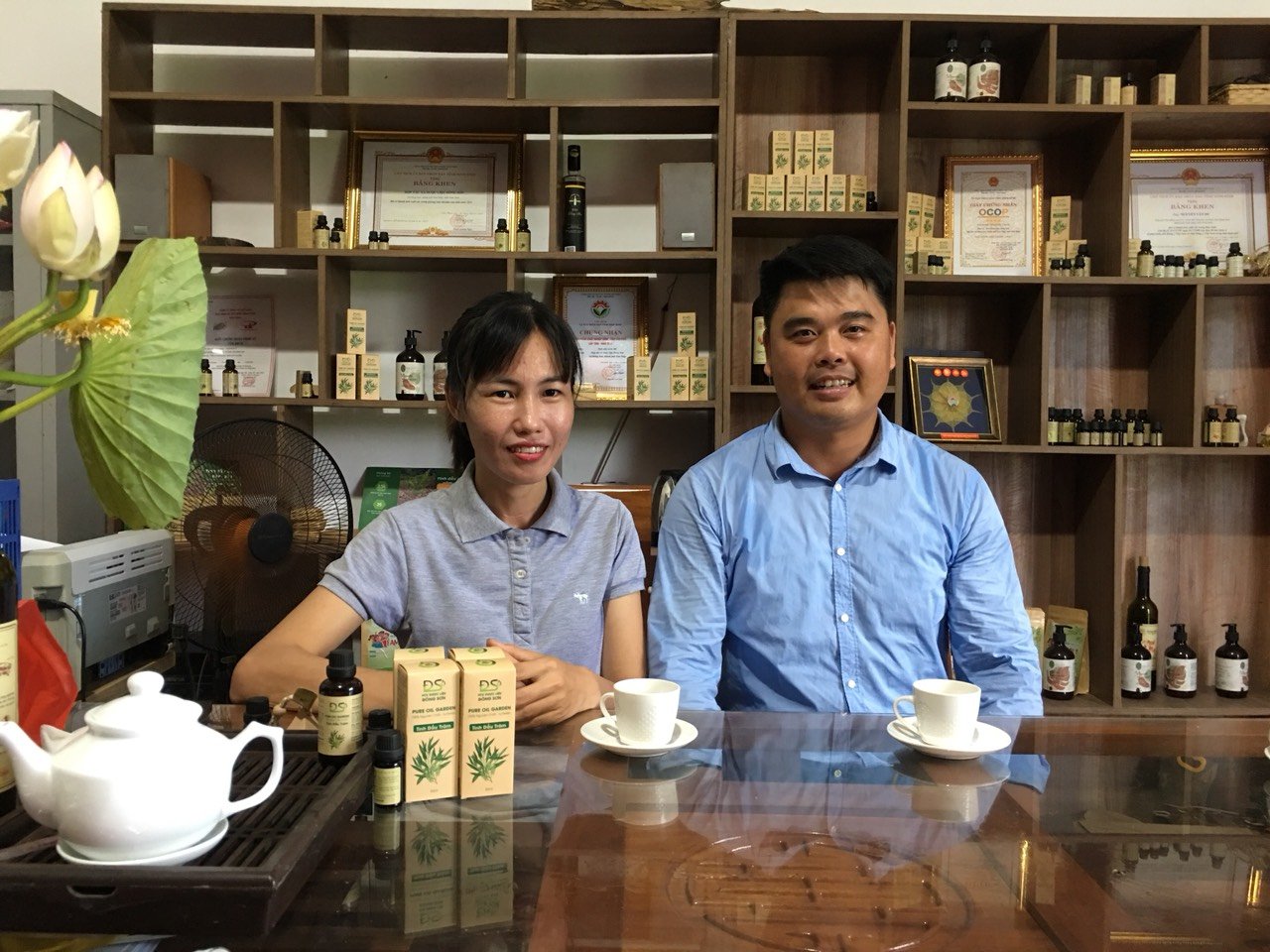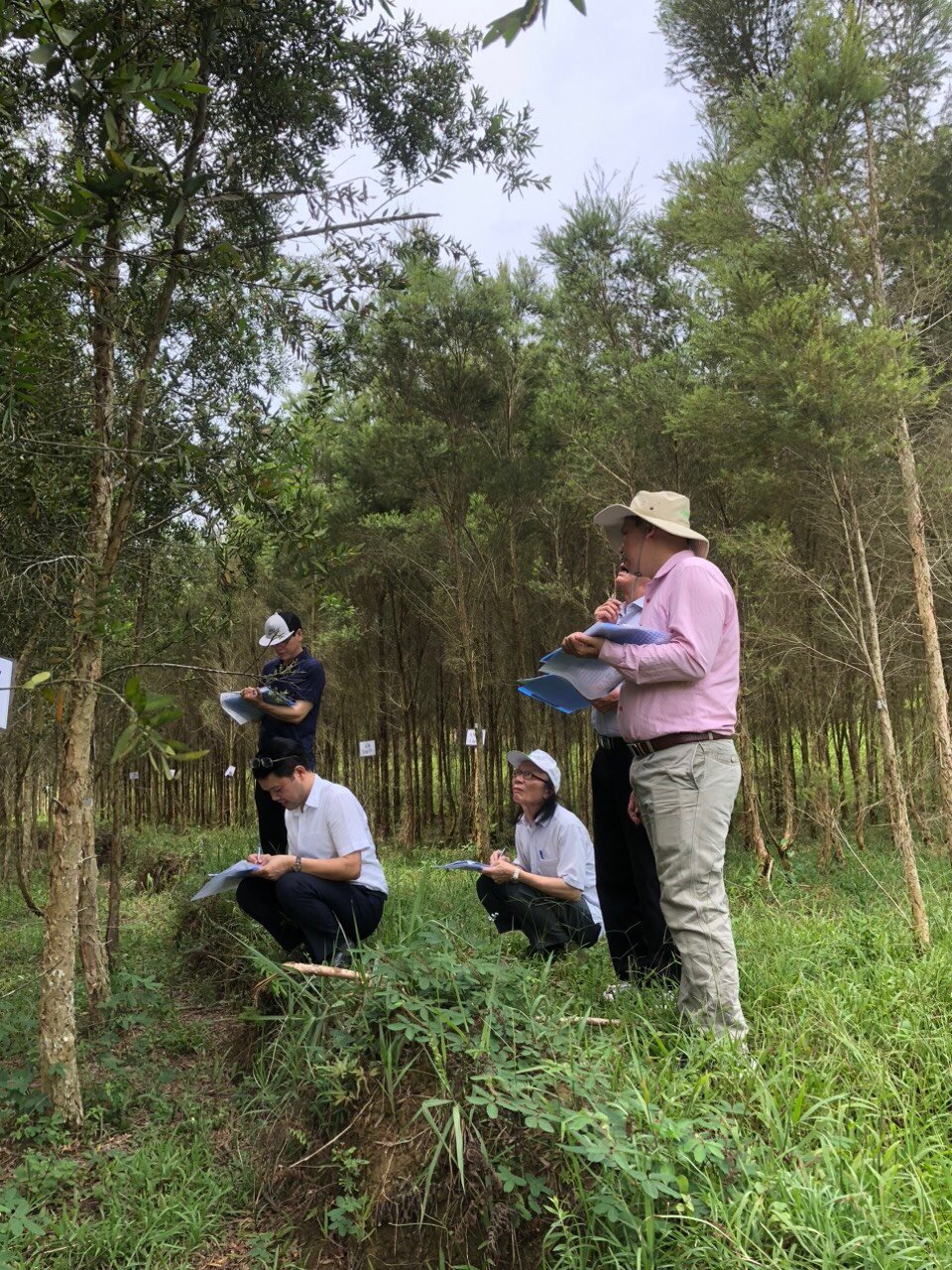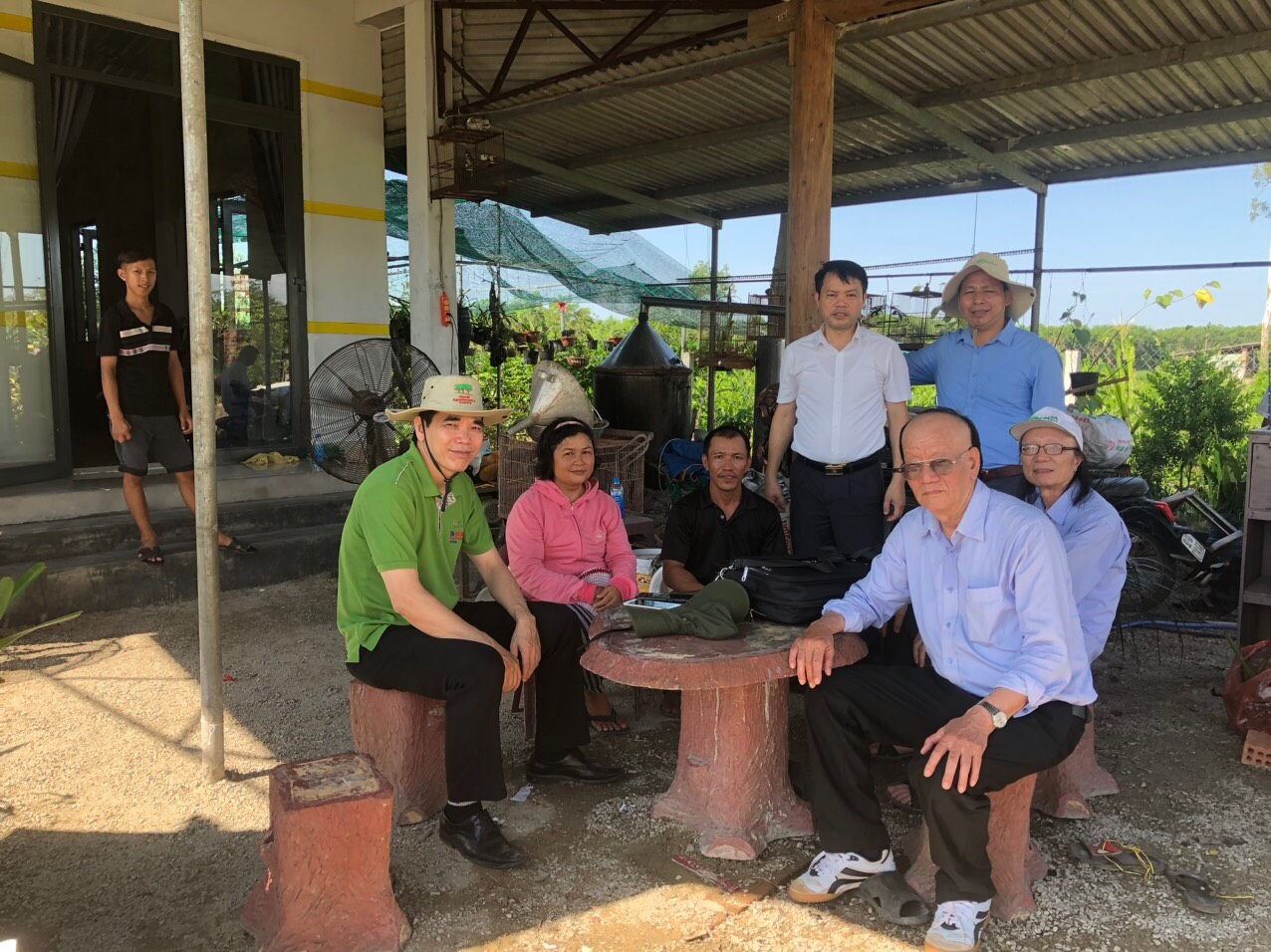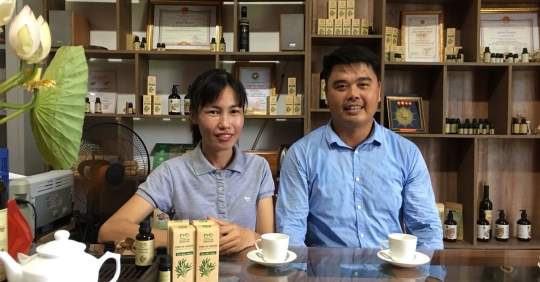At the end of May last year, I had the opportunity to be on site with the assessment team to appreciate the expansion of new planting areas for some essential oil medicinal plant varieties (tea tree and five sinews) by the Ministry of Agriculture and Rural Development in the three provinces of Hoa Binh , Ninh Binh and Quang Nam.
Leading the team during the field evaluation days was a young man named Du, a researcher at the Institute for Seed Improvement and Rural Development. You passionately introduced us to the new strains introduced in the trials, as well as the yield and essential oil quality of each strain. He also provided us with information on the demand and price of each essential oil in the domestic and international market over time…

Photo of Mr. Du and his wife, director of Dong Son Pharmaceutical Cooperative (in the showroom and at the product launch).
He told of the destiny of remaining faithful to these two medicinal plants in the first days of school. On this day he met Prof. Dr. Le Dinh Kha and was accepted by him as a contributor to the Institute of Improvement for the subject “Research on Variety Selection, Techniques for Cultivation and Processing of Melaleuca with High Yield and Quality Essential Oils”. Seed improvement and implementation of rural development. Since then he has continued to participate in research and expand the planting area of newly selected varieties of these two tree species.
Arrive in Tam Diep city (Ninh Binh province) at a time when heavy rain is about to begin. Mr. Du took us to the orchard, an experimental planting model of tea tree varieties, nestled among the farms with thousands of ornamental peach trees. We took advantage of the rapid on-site measurement and assessment, and then visited the Dong Son Pharmaceutical Cooperative.
A young woman is standing next to us in the distillery and processing of cajeput oil products. She introduced her cooperative, which currently produces essential oils distilled from the twigs and leaves of the tea tree and five-sine melaleuca. In addition to Cajeput essential oil products, her co-op also makes Melaleuca-scented shampoos and soaps. All of the cooperative’s products are tested to ensure they meet national standards. Currently, the cooperative’s products have been awarded a 4-star OCOP product certificate by the People’s Committee of Ninh Binh Province.
Discussing the history of the company’s establishment, the manager of the essential oil cooperative added that she previously worked as an accountant in Hanoi and has a fairly stable income. Up there, their children have better conditions to go to school. But since 2020, she decided to leave Hanoi to return to her hometown and help her husband to run the new pharmaceutical cooperative he founded. As she said this, she looked at the young man in our group. Interestingly, her husband – the director of the Dong Son Essential Oil Cooperative – is the same researcher who has been leading our delegation for the past few days. The young couple left town to return to their hometown, determined to start a business that began growing and processing Melaleuca essential oil.

The Department of Agriculture and Rural Development’s mission was to study and evaluate several Melaleuca cultivars to identify and expand acreage.
Mr. Du said that after many years of studying varieties of Melaleuca and Melaleuca trees, he also learned about the market and commercial value of Melaleuca essential oil products, as well as distillation technologies. , processing. When they had enough knowledge, they decided to invest in the development of the resource area and set up a cooperative in their hometown.
They are currently growing on 9 acres of five-string Melaleuca trees. He said that he will develop more tea tree acreage in the near future as the essential oil of this tree has a higher value and is popular in the world market. They hope to expand the Melaleuca growing area to 50-60 ha in the near future. At this time, other factories are expanded and modernized. Currently, pharma cooperatives have helped create jobs for nearly 30 local workers.
After introducing us to the distillation line of essential oils and essential oil products, the director of the pharmaceutical cooperative took us to the back of the workshop and pointed to the pile of Melaleuca leaves that was removed after distillation. as high as a mountain. He said it is the cooperative’s end product, which is processed entirely into fertilizer to supply the market.
He added that tea tree and melaleuca trees only need to be planted once, but can be continuously harvested for 25 years. From the trunk to the branches to the leaves, all parts of the plant can be used, nothing is left out. If the market is stable, revenues from Melaleuca will be much higher than those from rice in the same acreage. So many households in his hometown have come to his and his wife’s cooperative and offered to help convert them from growing rice to growing Melaleuca to provide raw materials for the cooperative.

The evaluation team visited Thao Nguyen’s essential oil production facility in Que My Township, Que Son District, Quang Nam Province to appreciate the proliferation of some Melaleuca varieties planted by the Ministry of Agriculture and Rural Development.
On the last day of the business trip, our group arrived in Quang Nam on a hot sunny day. On the dry white sandy soil, the Melaleuca trees planted three years ago still grow green and emit a sweet scent. The couple who own the experimental plantation were very excited when our evaluation team arrived.
They said that in the past the family had distilled cajeput tree essential oil, but the quality of the essential oil was not high and it was difficult to sell. Fortunately, her family’s Thao Nguyen essential oil distillery has been revived since the Institute for Breeding Improvement and Rural Development planted new Melaleuca strains on a trial basis in Que My Township, Que Son District. She boasted that her family had planted two acres of five-string Melaleuca trees with new cultivars provided by Mr. Du’s cooperative.
She also wants to experiment with planting more tea tree when seeds are available. Before leaving, each member of our group received a bottle of tea tree oil, a popular product in the domestic and international markets. A small gift, but within it is a desire to reach out and reach out to people in the sunny and windy climes. I believe they will succeed.
BILLIONTea tree and five-string Melaleuca are two species of these imported forest trees, which have a fairly wide ecological range, exhibit high adaptability, and thrive well on dry sandy soils in Que Son District (Quang Nam Province) and foothills of paddy fields in low-lying valleys in Tan Lac District ( Hoa Binh province) or on fertile hilly land in the Tam Diep region (Ninh Binh province). Research models in different regions have also shown which strains have the best growth, yield and essential oil quality.

